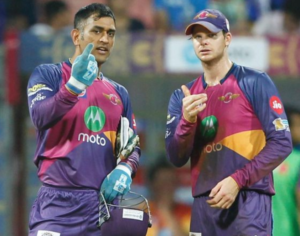The business relationship between India and Australia has had many false starts.
But a growing population of Indian-Australians, and a greater understanding of the potential of the world’s largest democracy, is prompting Australian business to try harder.
A conference of young entrepreneurs from the two nations has been looking for ways to supercharge the relationship in the next decade, attempting to make India a trading partner on the scale of China and Japan.
Speaking at the Australia India Youth Dialogue, former secretary of the Department of Foreign Affairs and Trade Peter Varghese urged local entrepreneurs to embrace the chaos and diversity of India.
“There is no other single market in the world that has more growth opportunities for Australia than India,” he said.
“So if you work backwards from that headline, the question is, how do we best position ourselves strategically?”
Mr Varghese was commissioned by the Federal Government to report on our business relationship and develop a strategy to improve it.
To him, the 700,000 Indians now calling Australia home — a number that has spiked since 2006 — are a good place to start.
“In the long-term they’ll prove to be a very important connecting thread between Australia and India and that will feed back into the business trade and investment relationship,” he said.
Australia’s current top trading partners are China ($195 billion), Japan ($78 billion), the US ($70 billion), South Korea ($52 billion) and, then, India ($29 billion).
The report recommends an ambitious target: to make India one of our top three export destinations by 2035.
It is not an impossible goal. India’s population is more than 1.3 billion people, but just a year before the 2017-18 figures above, Australia did more trade with our near neighbour New Zealand, and it has a smaller population than Melbourne.
Moving ‘beyond cricket, curry and the Commonwealth’
New Delhi lawyer Talish Ray had never visited Australia until 2015, but has visited more than annually since. She said Indians now have a more nuanced understanding of Australia — beyond cricket, curry and the Commonwealth.
“While it’s not right there on the front page, it’s all tremendously exciting,” she said.
“More and more there are people who already have interests [in both countries]. As opposed to a year back, a decade back, it was difficult to find somebody who was as familiar with Australia as they were with India.”

Ms Ray has partnered with Women’s Legal Service Tasmania to replicate its ‘respectful relationships’ website for an Indian audience.
“Economically it is building up and the momentum we’ve seen in the past few years has been very rapid,” she observed.
“That’s because both nations like to take time to think of each other and look at each other, rather than just rushing in to short-term gains.”
Australia targets agribusiness, resources and tourism
Mr Varghese’s report, ‘An India Economic Strategy to 2035’, looks at what we have to offer to India, and who might be interested in buying it.
It suggests parlaying our successful export of education into three key fields — agribusiness, resources and tourism — and six “promising sectors” — energy, health, financial services, infrastructure, sport, and science and innovation.
With the first three, the plan is to be inside the top five providers within the next two decades.
Similarly, instead of tackling India’s diverse and vast landscape, it wants to focus efforts in just ten of India’s 36 states and territories: Maharashtra, Gujarat, Karnataka, Tamil Nadu, Andhra Pradesh, Telangana, West Bengal, Punjab, the National Capital Region of Delhi and Uttar Pradesh.
The report says these states have greater stability in the “access to land, regulation of labour, provision of infrastructure, the application and interpretation of regulation” needed for foreign businesses to succeed.
Management consultant Jasmin Craufurd-Hill, attending the dialogue, said better relationships can be built off the back of our success in attracting secondary and university students from India.
“When we look at what’s the third largest trade, for Australia, for export, it’s education [and] the second largest population of that student population is Indian students,” she noted.
“What can we learn from that? What can we learn from building up similarities and understanding that then has the potential over the years to fully develop as trade and other relationships?”
Australia hasn’t ‘deepened that connection’ with India
Amit Singh has worked as a policy analyst for prime ministers Kevin Rudd and Julia Gillard, and Opposition Leader Bill Shorten.
He is now based in San Francisco, working for Uber as their head of global policy for work, and sees the current relationship between India and Australia as broad but not effective.
“We just haven’t deepened that. I think if you think about the things we have in common: we’ve got the Commonwealth, we’ve got curry, we’ve got cricket, but we haven’t really deepened that connection,” he said.
“India is now the second largest population, it’s the largest democracy. There are ways in which we can actually do much more to deepen that understanding.”
The 2016 Census revealed there were 455,0000 people born in India living in Australia, and the size of the Indian diaspora has since exploded to top 700,000 people according to Mr Varghese’s report. That is more than ten times the number of Japanese-born Australians, but the nation’s lack of cultural affinity with Japan has not held back trade with that country.
Mr Singh said Australia now risks being left behind unless it gets on the front foot, as other countries make investments.
“We’re moving towards an economy that is more digital, an economy that is more based around information and the nature of how we use technology,” he said.
“That’s something in which Australians have traditionally tended to lag, but do well when we’ve been given the opportunity. It’s something that Indians do particularly well.
“I think the connections we’re able to build in this future economy between those two societies, these two countries, is a giant opportunity for us.”